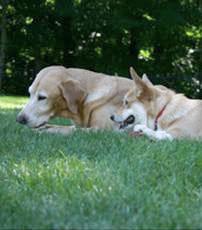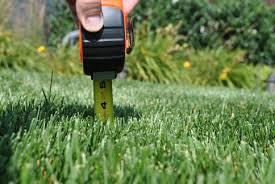Frequently Asked Questions

What is IPM? Integrated Pest Management (IPM) is an effective and environmentally sensitive approach to pest management that relies on a combination of common-sense practices. IPM programs use current, comprehensive information on the life cycles of pests and their interaction with the environment. This information, in combination with available pest control methods, is used to manage pest damage by the most economical means, and with the least possible hazard to people, property, and the environment. The IPM approach can be applied to both agricultural and non-agricultural settings, such as the home, garden, and workplace. IPM takes advantage of all appropriate pest management options including, but not limited to, the judicious use of pesticides. In contrast, organic food production applies many of the same concepts as IPM but limits the use of pesticides to those that are produced from natural sources, as opposed to synthetic chemicals.
Do you need to have a special license to apply pesticide?
Most definitely. MA. requires all applicators to pass a 100 question pesticide safety exam and must have a certain about of recertification credits after that. All applicators must also be supervised by a commercial license holder, which Andy the owner is.
Are all applicators licensed and trained? Yes, we all have a certified Ma. pesticide license, recertification class requirements and combined 40 years of training.
Is liability and workers comprehensive insurance required? Yes, we have all the worker comp. and liability insurance. We will provide anyone with a certificate of insurance.
Do we do any mowing, landscaping, tree services, irrigation or snow plowing?No, We focus on being specialists only in the turf field, which is challenging enough. But we do have contacts with specialists in each of those areas.
When is the First scheduled treatment of Each Year?
Weather Depending, usually end of March-end of April.
If planning a spring clean-up- PLEASE contact us by March 25th to postpone your first Crabgrass Preventative Application. If we do not hear from you prior, we will use our good judgment on treatment. It is especially important for you to understand, that once the 1st Pre-emergent crabgrass application is made only a Very light surface raking can be done to avoid an abundant summer annual weeds and crabgrass infestation.
How To Minimize Summer Crabgrass & Annual Weeds?
The most effective way to help minimize summer crabgrass is preventing the annual seeds from germinating. Many customers and landscapers don’t understand that timing, preparation and good cultural practices are crucial in preventing seeds from germinating.
Timing- We understand that you as customers or hired landscapers have weather related delays (snow melt, lawn moisture, rain, wind etc.), but unfortunately nature doesn’t wait for us. I stress the importance of trying to get your yard prepared as soon as weather permits because any postponement can result in a major crabgrass and annual weed summer infestation. Pre-Emergent’s Applications should be applied prior to soil temperatures reaching 55 degrees (sometime in April) and must be watered in to activate the solution. That is why we encourage all lawn to be prepped as early as possible to avoid any unpredictable soil temperature increases. Driveway and road edges usually warm very early in spring in hence being a common place for summer infestation.
Preparation-Doing a good Spring Clean-up or very short mowing only prior to your 1st service will allow pre-emergent’s to settle in soil beds where the hibernating seeds are waiting to germinate when soil temperatures reach 55 degrees.
Good Cultural Practice- Any soil disturbance or short mowing after initial treatment will increase the chances of undesirable seeds to germinate and create summer infestation. Mowing at a 3 ½ “ measuring height starting after initial 1st application will reduce stress, provide denser turf, and enhancing the longevity of the pre-emergent’s minimizing photo degradation.
* Remove any loose debris (raking, dethatching, mowing etc.) that might prevent crabgrass preventatives from penetrating down to the soils.
* Please cut grass short to remove any excess winter dead tissues.
* Some lawns may need Mechanical Dethatching- removal of non-decompose layer between the surface and the soil (only if needed and certain types of grasses can’t not be dethatched). Contact us as soon as possible if you need guidance on dethatching.
Post 1st Application
* No soil disturbance after 1st application through mid-summer (avoid raking, dethatching, seeding, weed whacking etc.).
* Maintain mowing height 3 ½ “ (meaure turf height-Mowing decks are usually inaccurate) through-out the entire season. Mowing or weed whacking grass short at any time will disturb crabgrass barrier.
* If natural rain doesn’t provide it for you. Watering in pre-emergents thoroughly (1”) within 5 days of 1st treatment.
Thatch in lawns is often misunderstood; both its cause and control. Some lawns have serious thatch problems while others do not. Thatch is a layer of living and dead organic matter that occurs between the green matter and the soil surface. Excessive thatch (over 1/2 inch thick) creates a favorable environment for pests and disease, an unfavorable growing environment for grass roots, and can interfere with some lawn care practices.
The primary component of thatch is turfgrass stems and roots. It accumulates as these plant parts buildup faster than they breakdown. Thatch problems are due to a combination of biological, cultural, and environmental factors. Cultural practices can have a big impact on thatch. For example, heavy nitrogen fertilizer applications or overwatering frequently contribute to thatch, because they cause the lawn to grow excessively fast. Avoid overfertilizing and overwatering. Despite popular belief, short clippings dropped on the lawn after mowing are not the cause of thatch buildup. Clippings are very high in water content and breakdown rapidly when returned to lawns after mowing, assuming lawns are mowed on a regular basis (not removing more than one-third of the leaf blade).
Lawns that are not mowed frequently enough can grow too tall, allowing the crown of the grass plant to grow to far above the soil surface contributing greatly to thatch problems.
Aerating is the process of punching holes (usually 3-4 Inches deep) into your lawn to allow water, oxygen, fertilizers, and other nutrients to penetrate the soil and better reach the roots of your grass. Aerating is usually done by pushing hollow cylinders into the ground and forcing out plugs of soil to the lawn surface. Spikes are also used to aerating, but are not usually as effective. Because spikes do not remove “plugs” from the ground, they do not create holes in the soil for expansion and in some cases, weed prevention. Aerating can also help in breaking up the buildup of thatch in your lawn.
Why Should I Aerate?
The need for aerating a lawn generally stems from compacting from heavy use such as foot traffic, automobiles, etc.. Typically, the more clay you have in your soil, the more susceptible your lawn is to compacting. Your lawn requires three elements for survival – moisture (water), nutrients, and air. When your lawn gets heavily compacted, its roots get deprived of the air they need to survive and grow. Additionally, aerating also allows water and nutrients to better penetrate into the soil and to the grass roots. If you have problems with pooling of water in your lawn, or are on a steep slope or grade, aerating can help to trap the water and allow it to absorb more easily into the ground. If you have a small buildup of thatch each year, aerating generally solves this problem as well.
Do I need Grub Preventative every year?
The real answer is I Don’t Know! First we have to understand that lawn grubs are the larvae of beetles (8 different varieties in our area). Lawn grubs eat the roots of grass and when roots die the plant will soon follow. The type of beetle, lawn and soil condition, environmental conditions, weather etc. play a role in the annual grub population. Since we can’t predict some of these conditions, we recommend an environmentally approach to prevent the population of beetle eggs hatching successfully. There are grub preventatives and grub controls (After the larvae worm is in the root zone). Country Lawn Care believes it is environmentally and economical beneficial to prevent the problem rather than cure the problem with more pesticides and possibly losing your turf in the meantime. It will cost you more money to replant or sod, watering, and have more indirect effects that will last for years. Grub Preventatives doesn’t eliminate all the grubs, but it reduces the population significantly so the grass roots can continue to survive. Another important misunderstanding by homeowners is that when we treat for grubs there will be no wildlife damage such as moles, skunks, birds etc. Many wildlife feed on other soil dwellers (worms, ants, insect larvae, etc.) and small population of grubs that might be in root zone. Grub Preventative is not a wildlife control, its design to reduce the population of beetle grubs from doing turf damage.
Customers Responsibilities!!!
- Read over all statements left behind after all applications and try to follow safety guidelines and recommendations.
- Follow recommended mowing heights throughout the season.
- Water according to weather condition and our recommendations.
- Notify us regarding any unusual turf changes or if dissatisfied, so we can try to rectify any concerns you might have.

Maintain turf height from 3"-3.5 " from April until last mowing of the season
